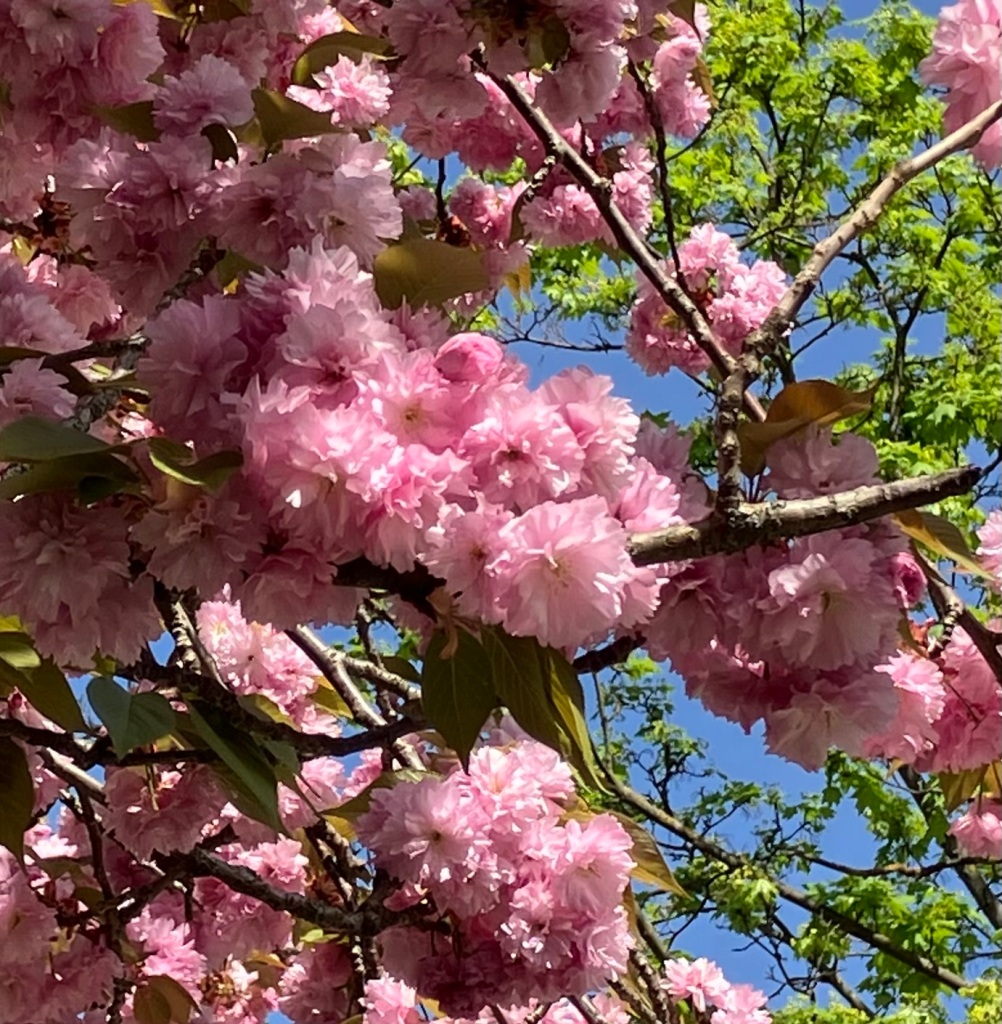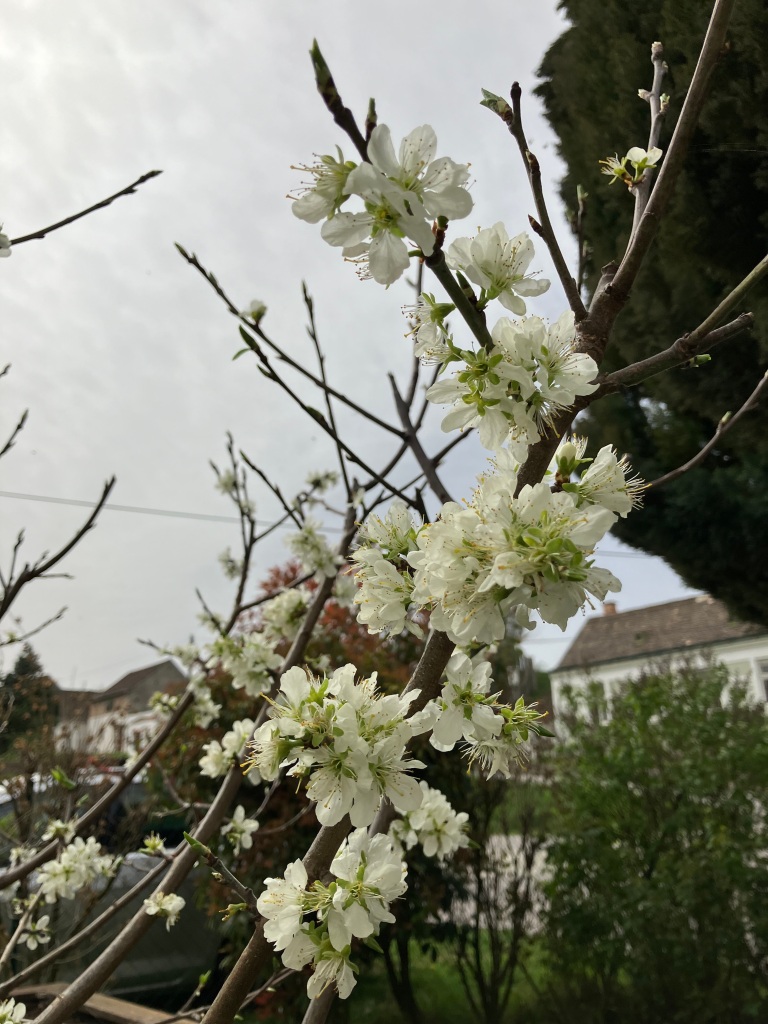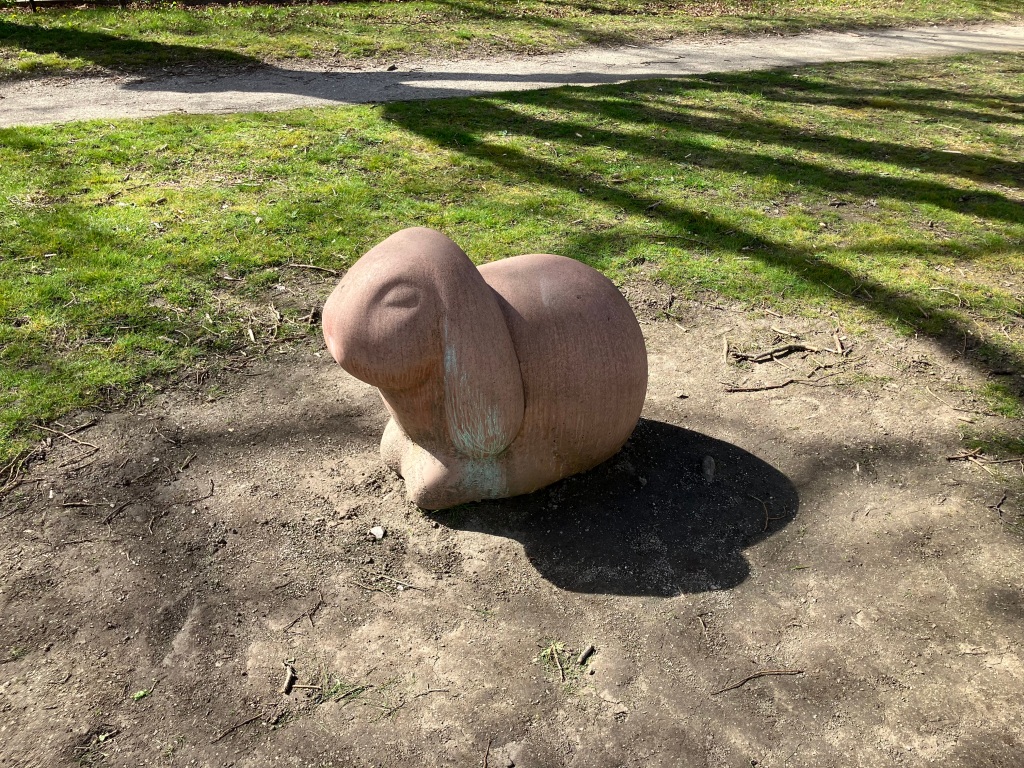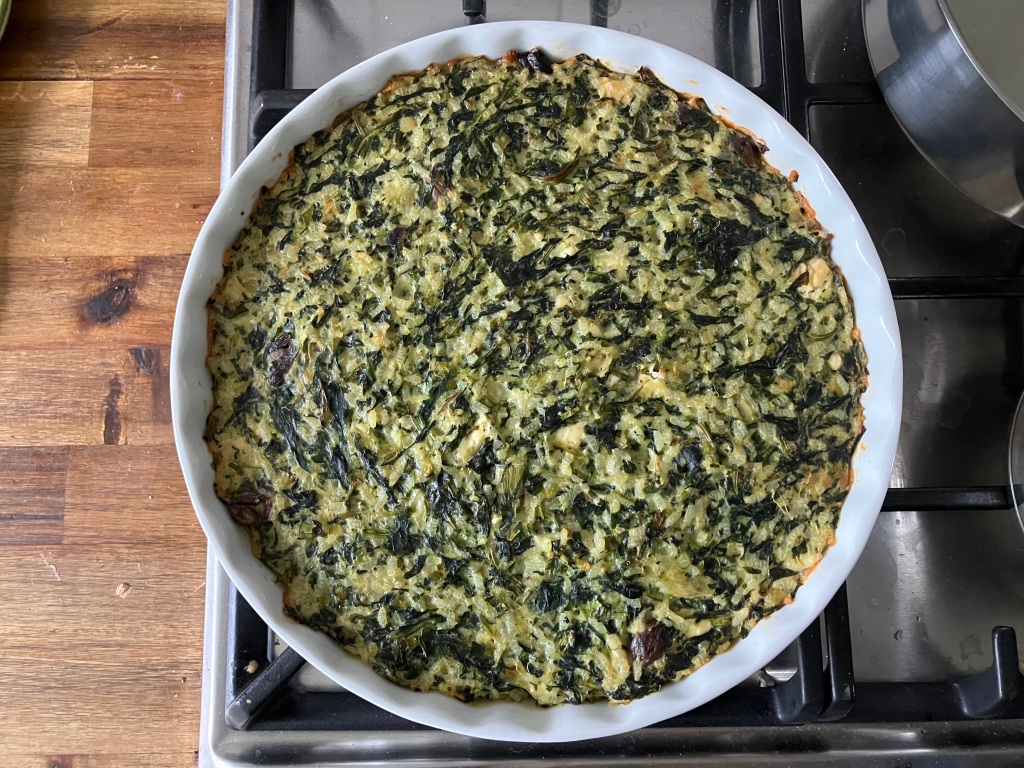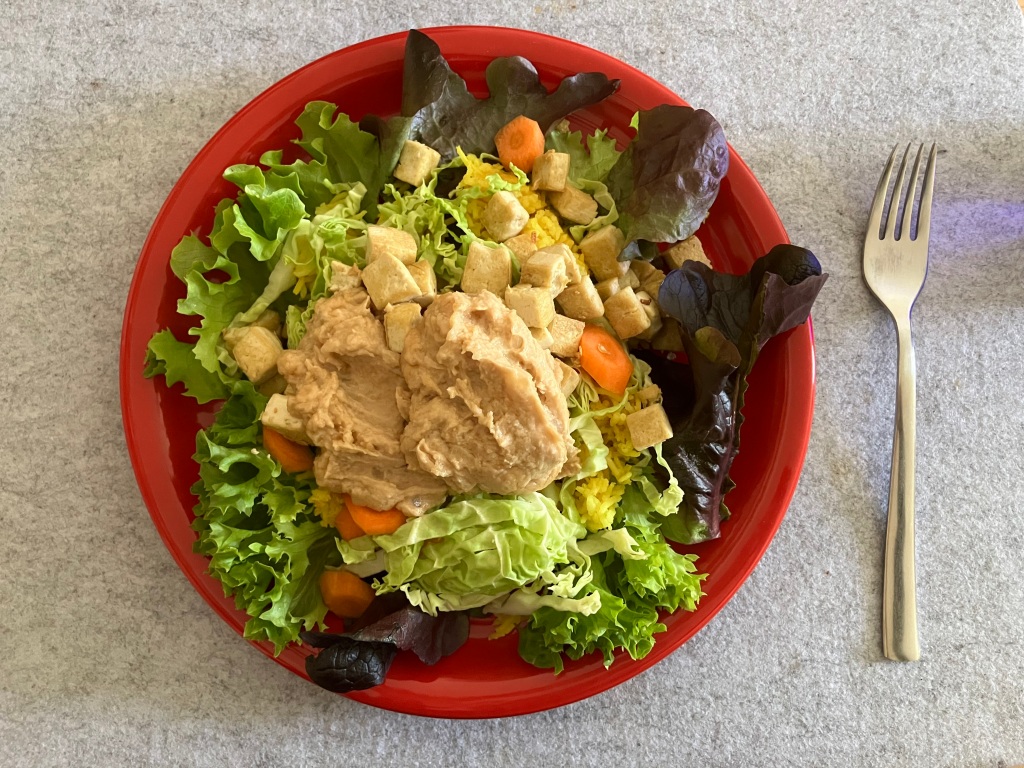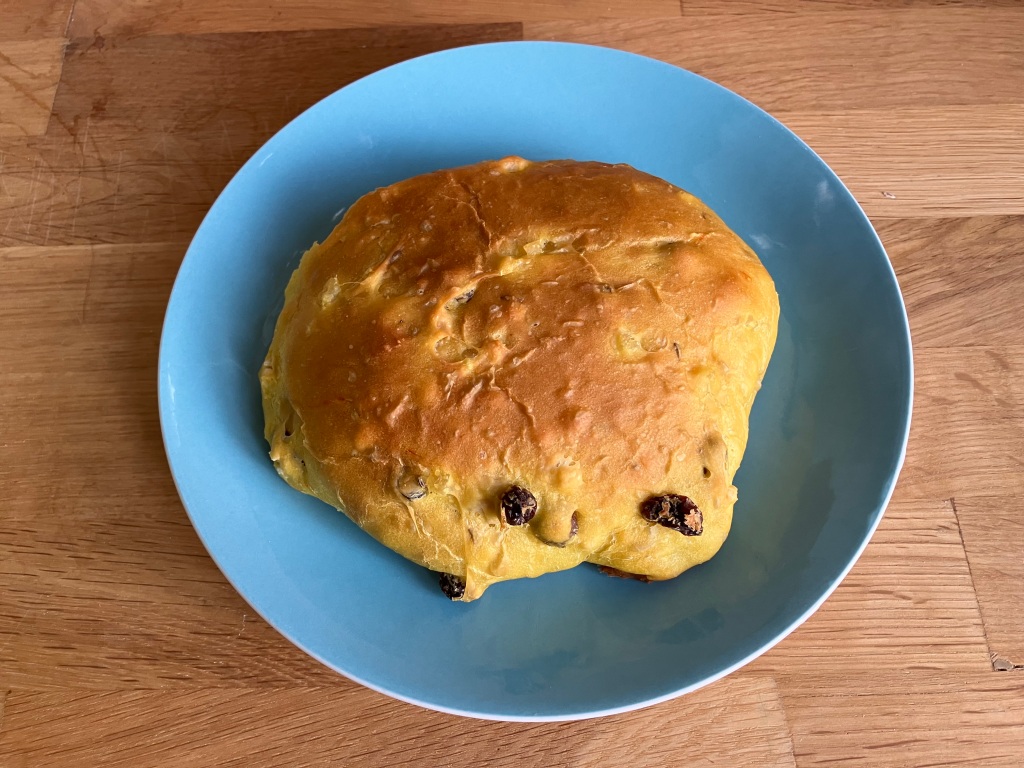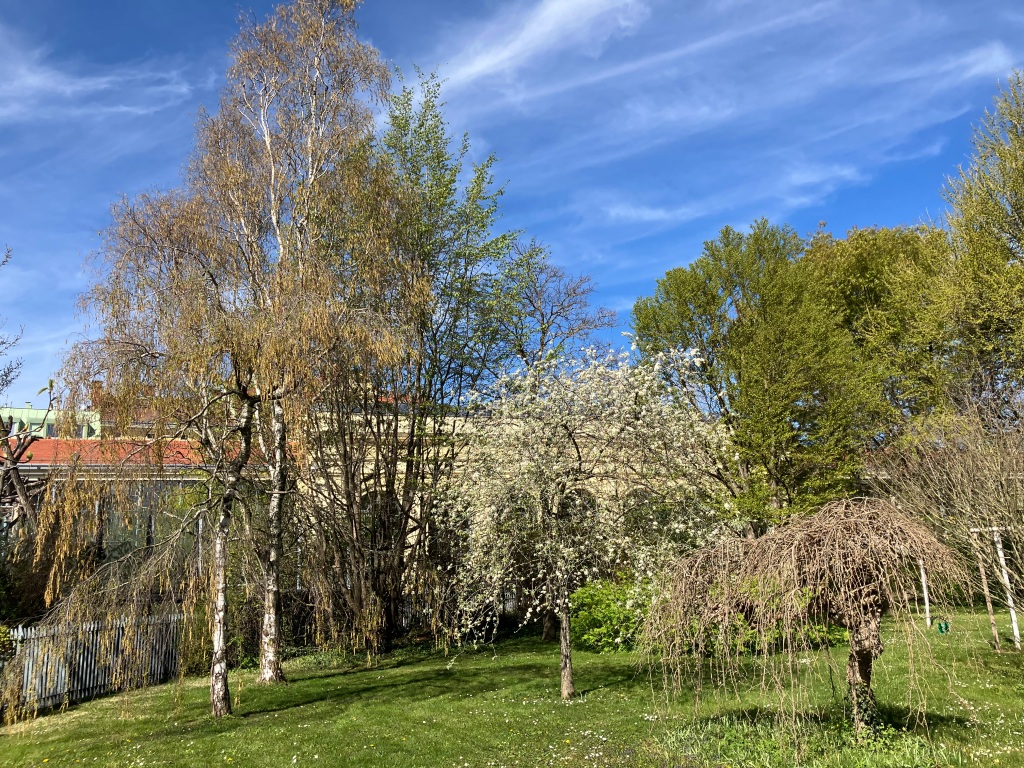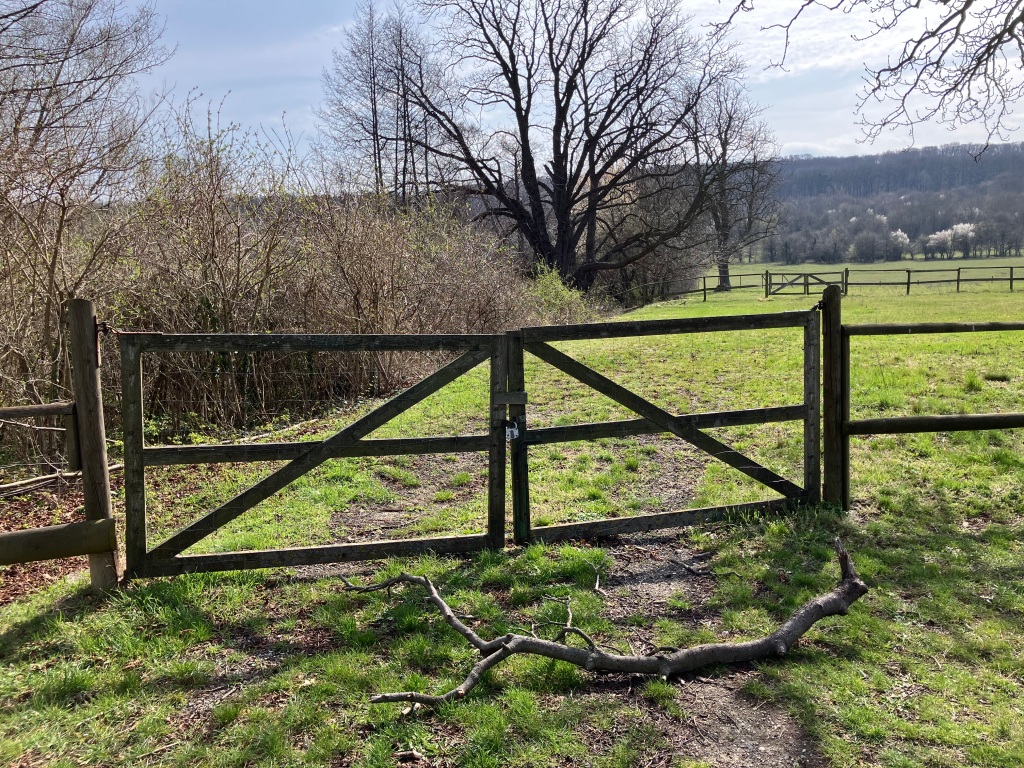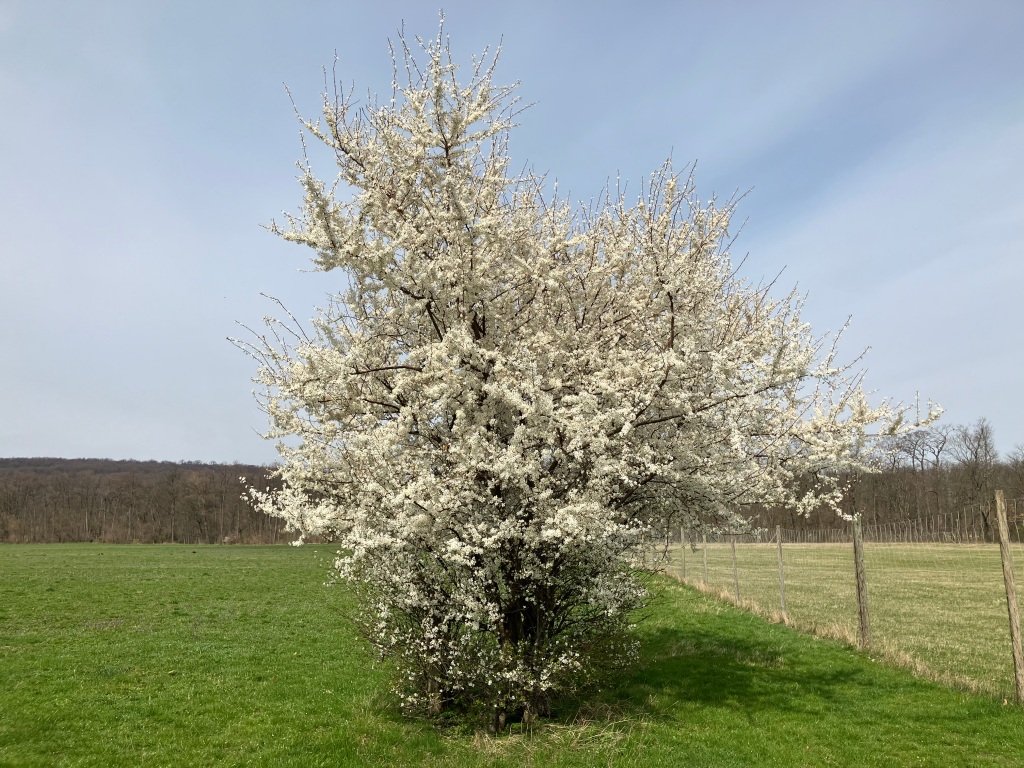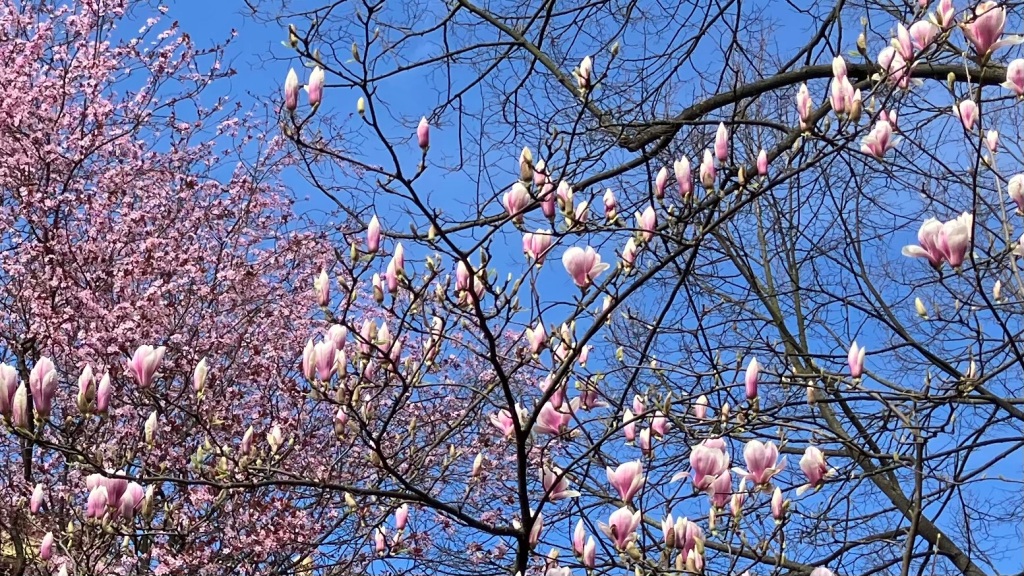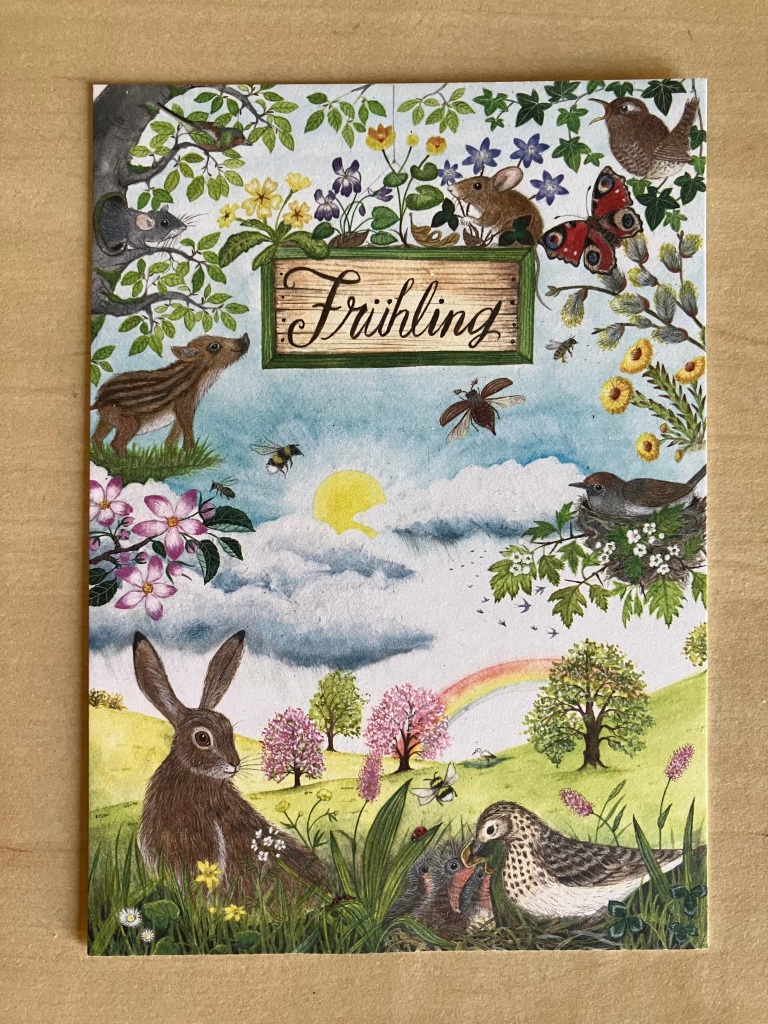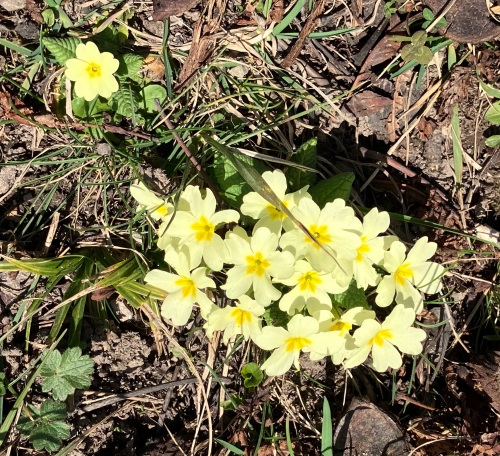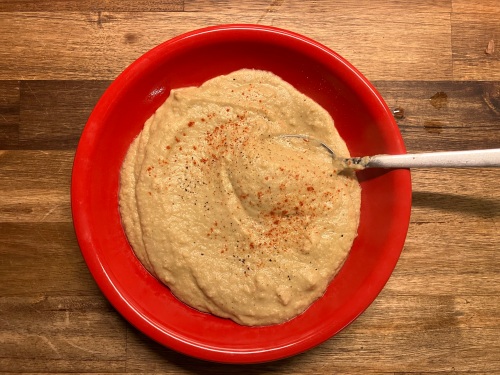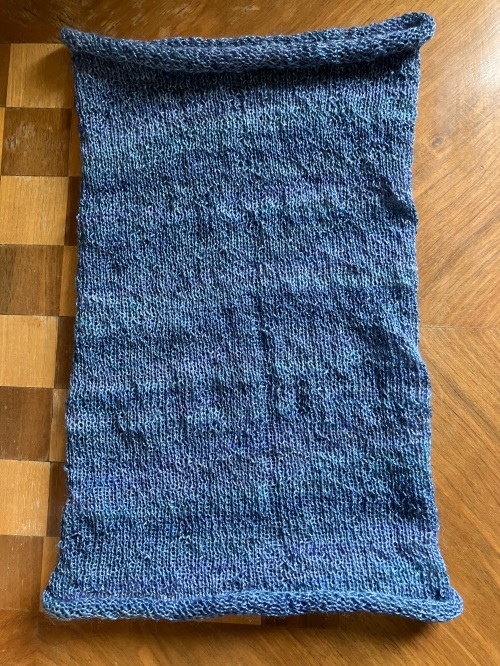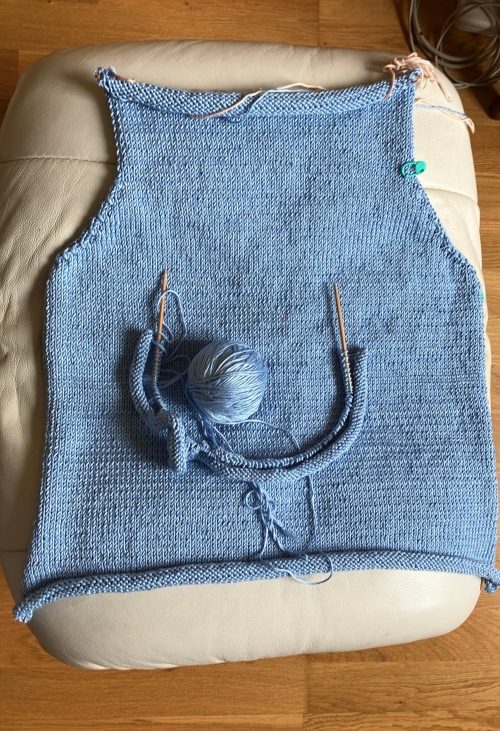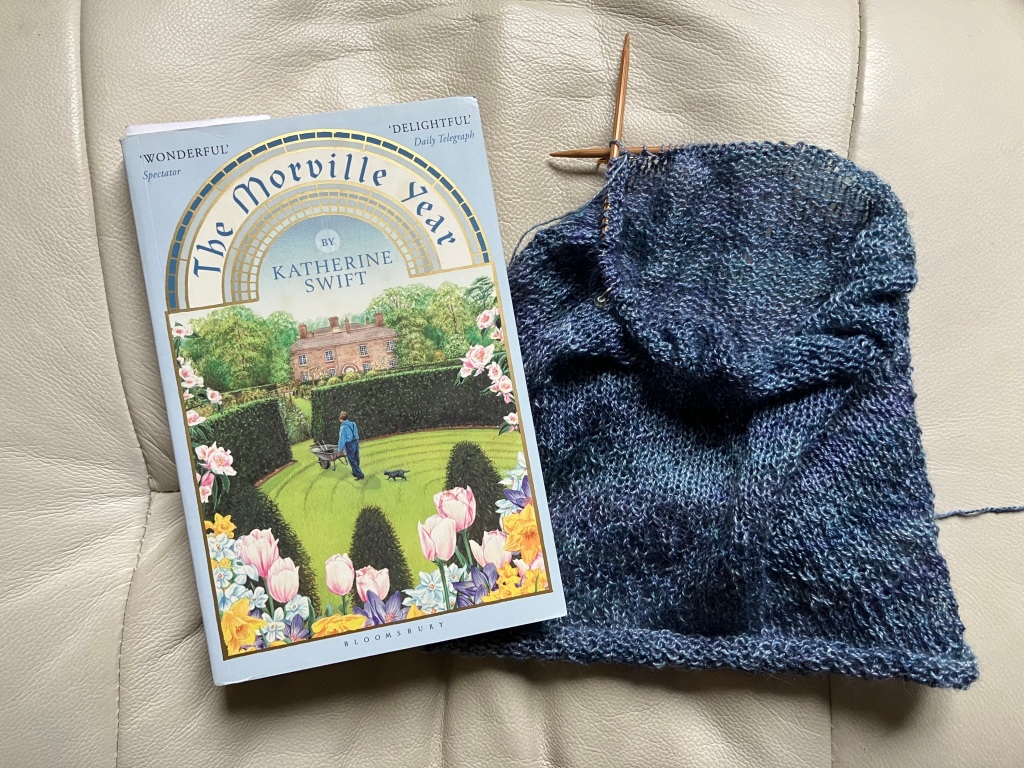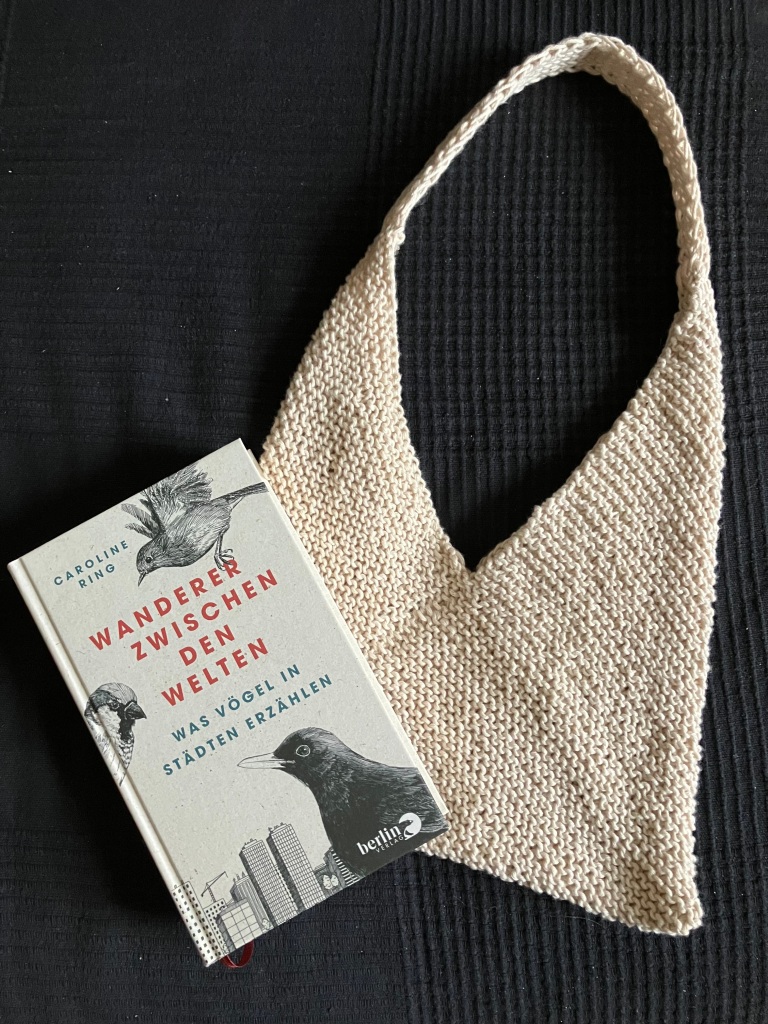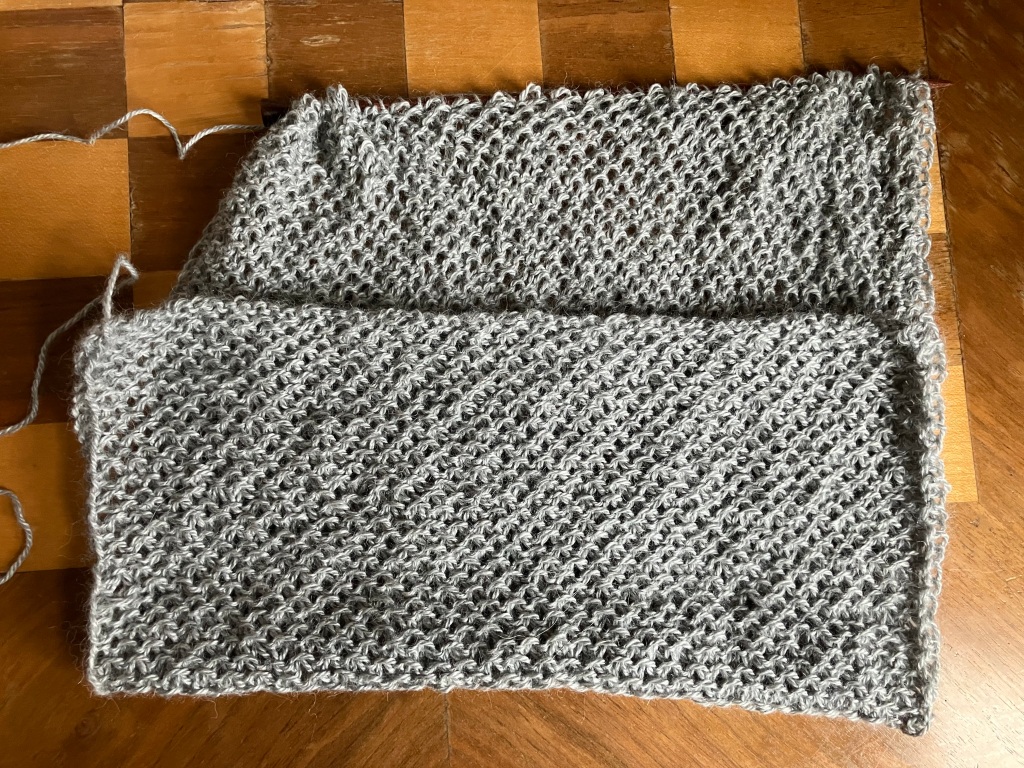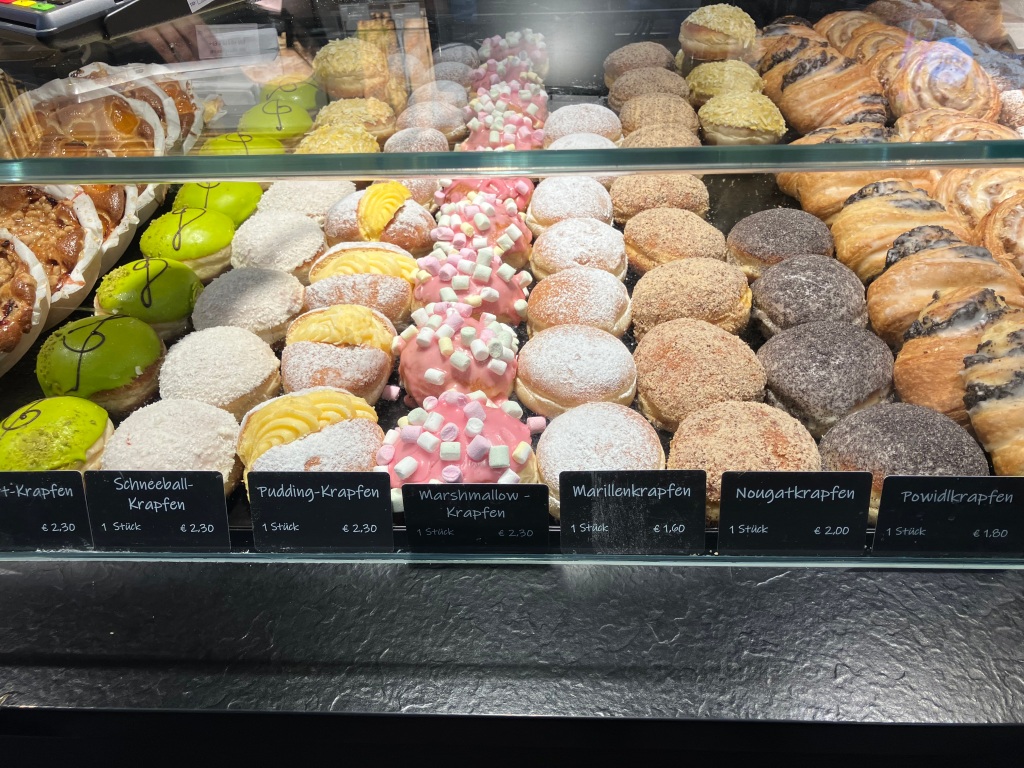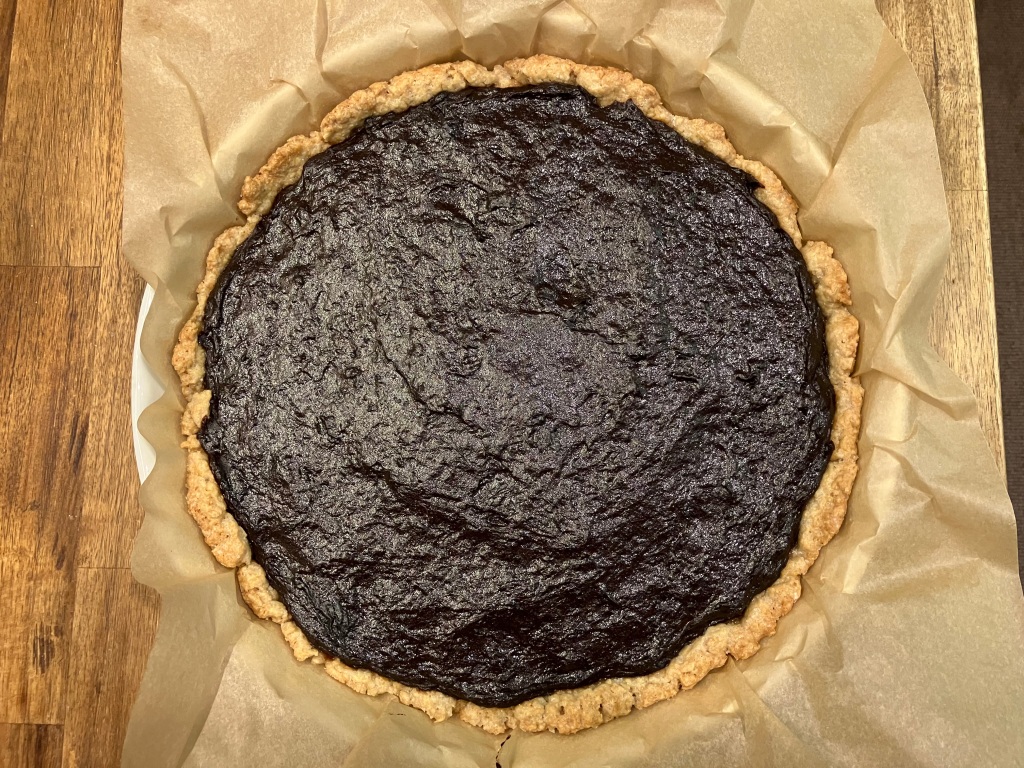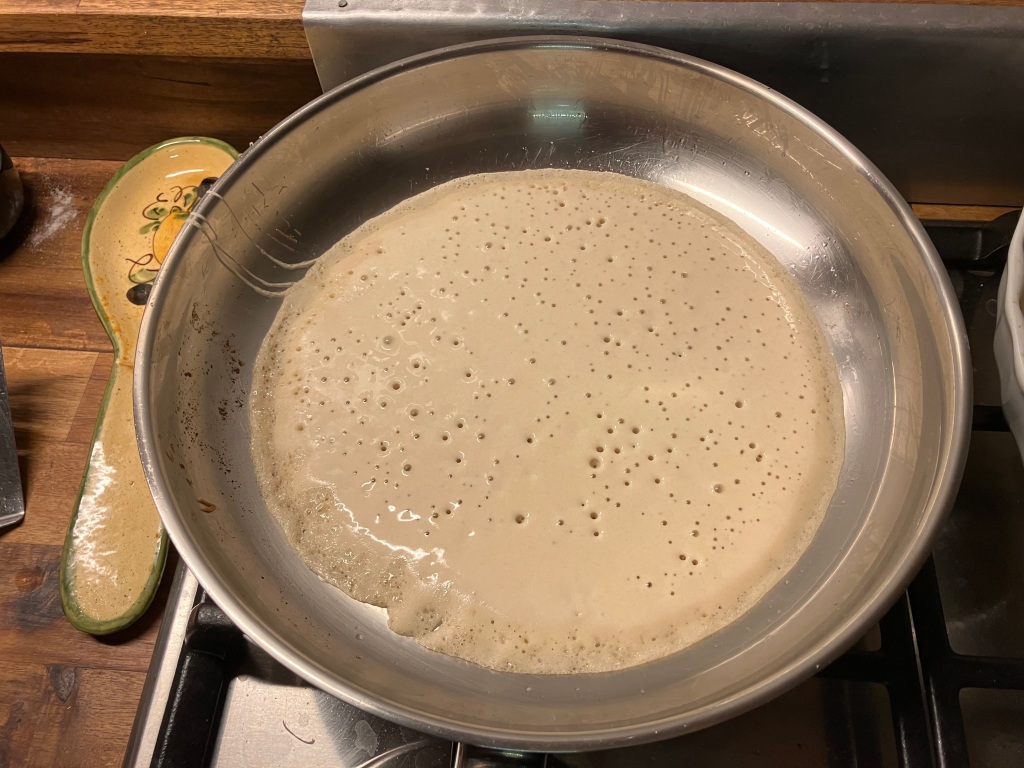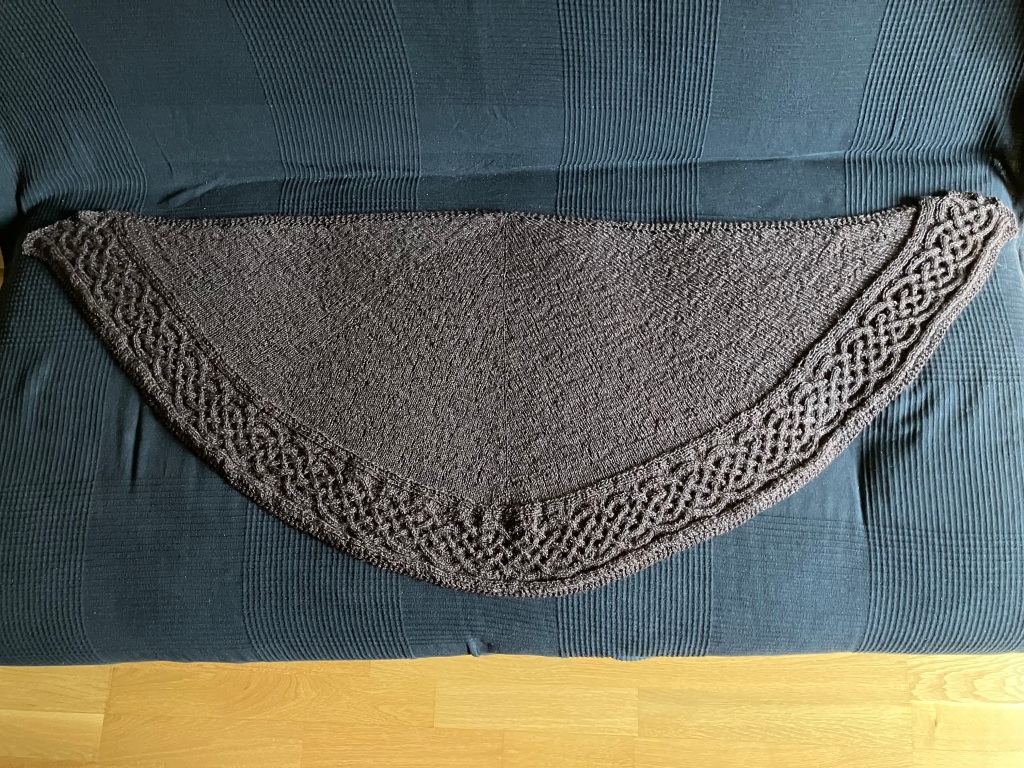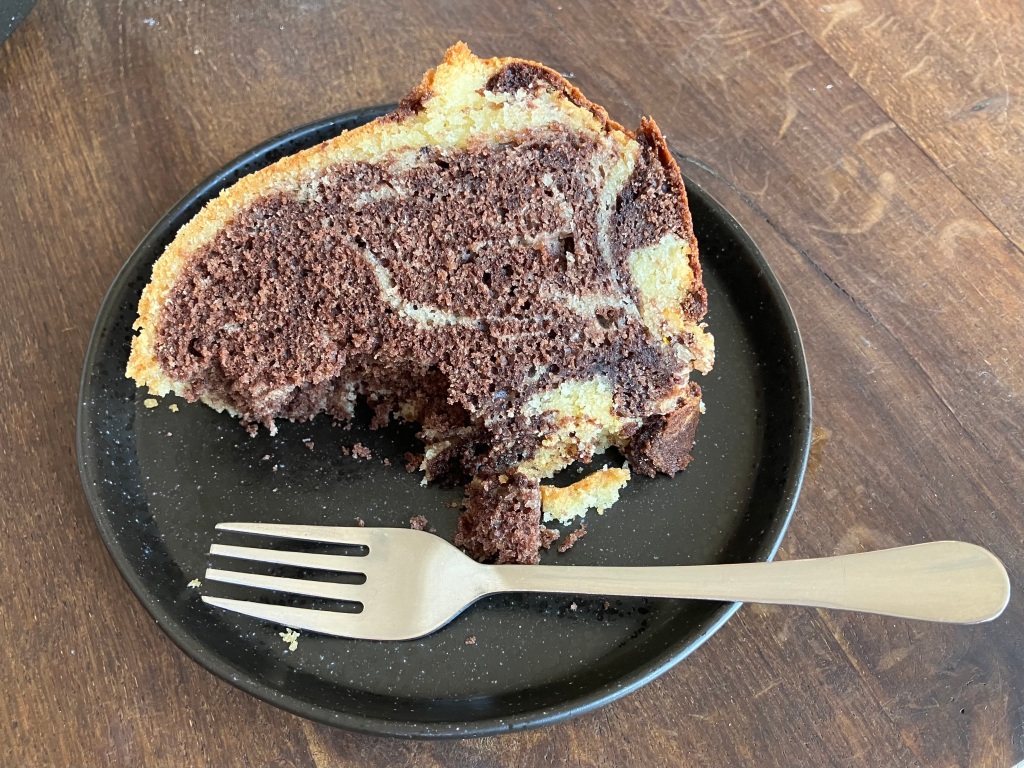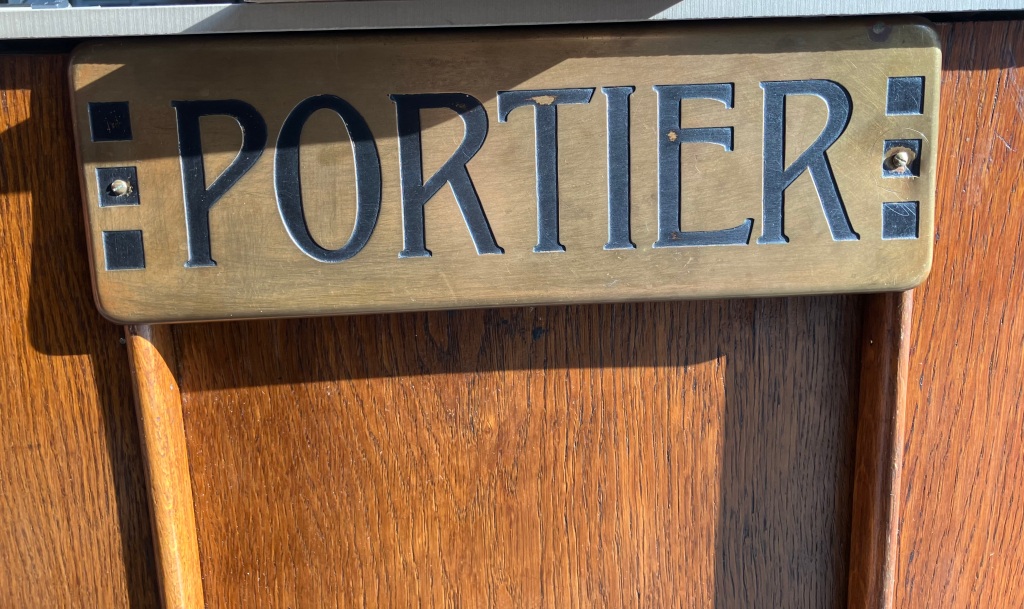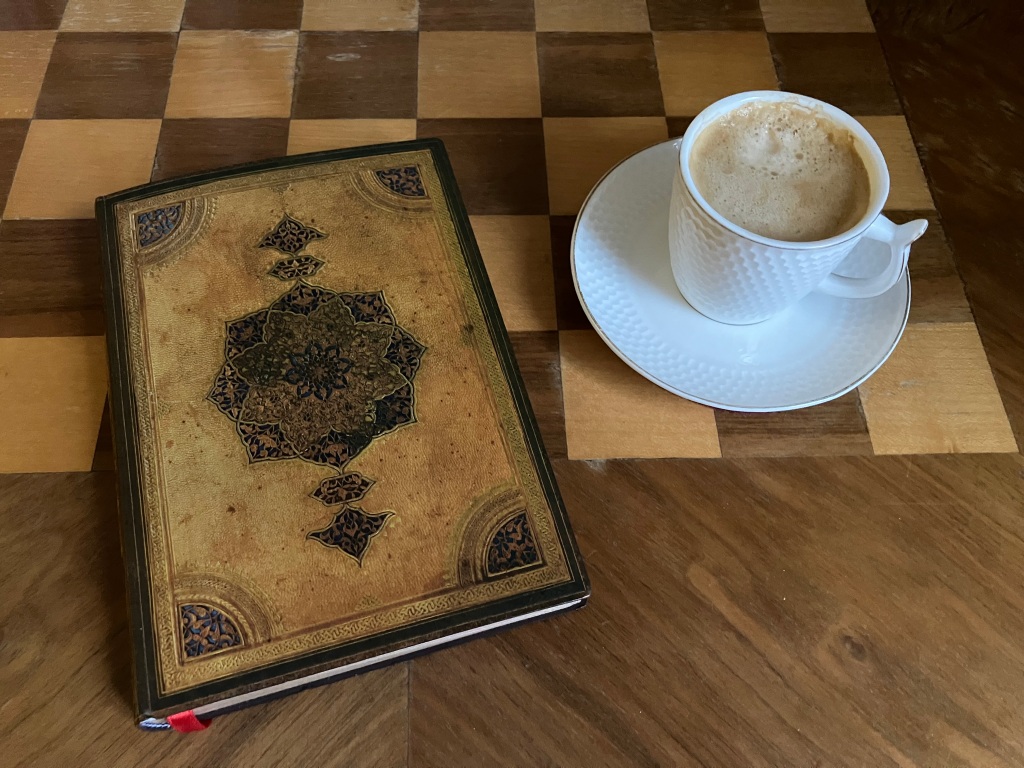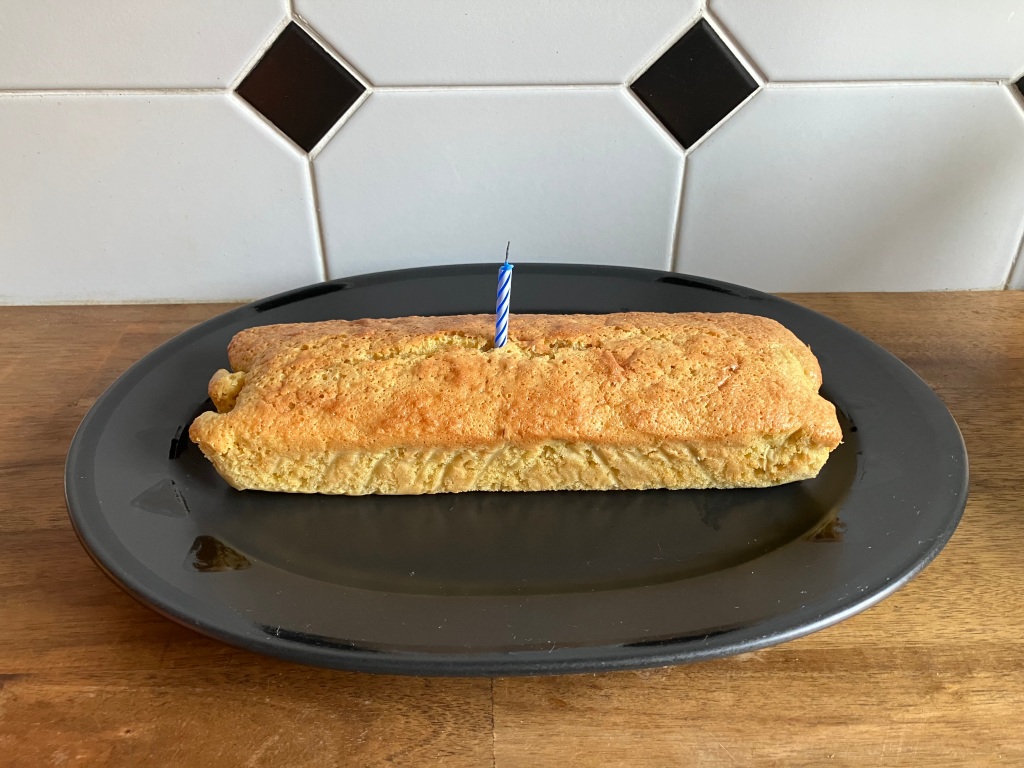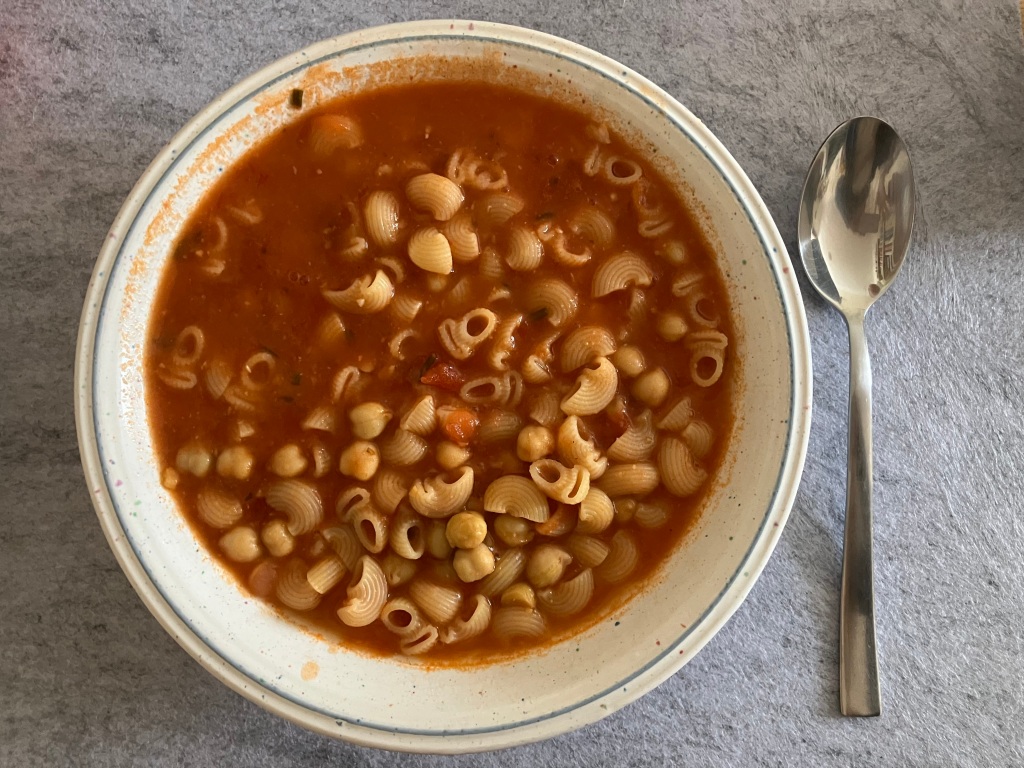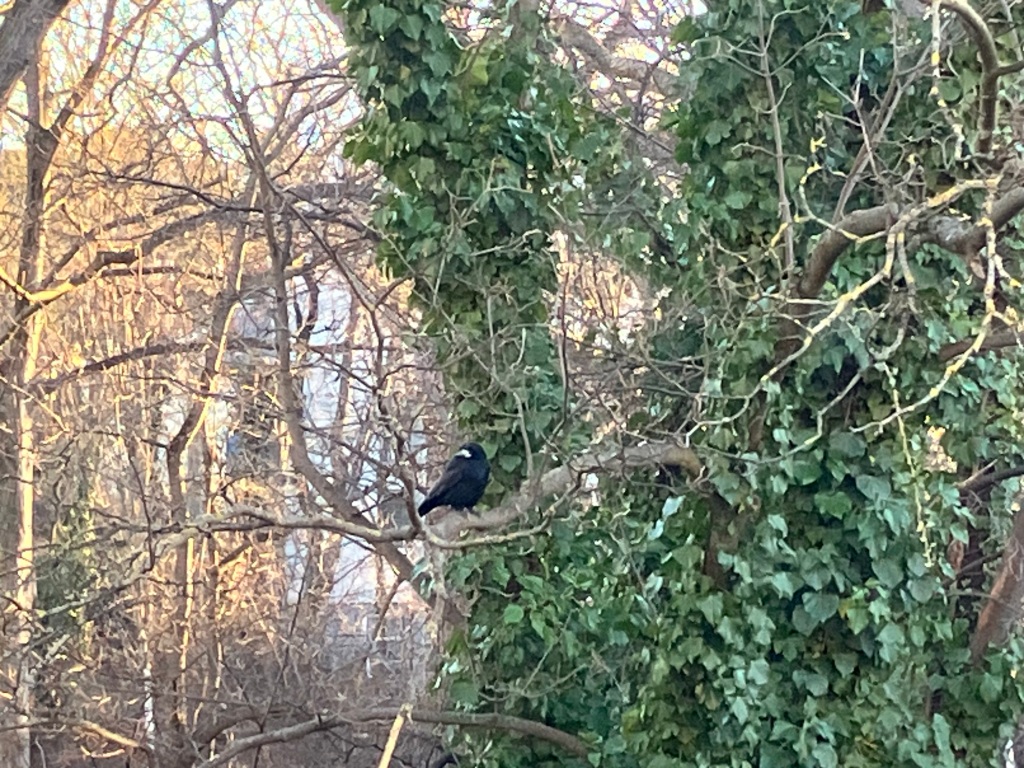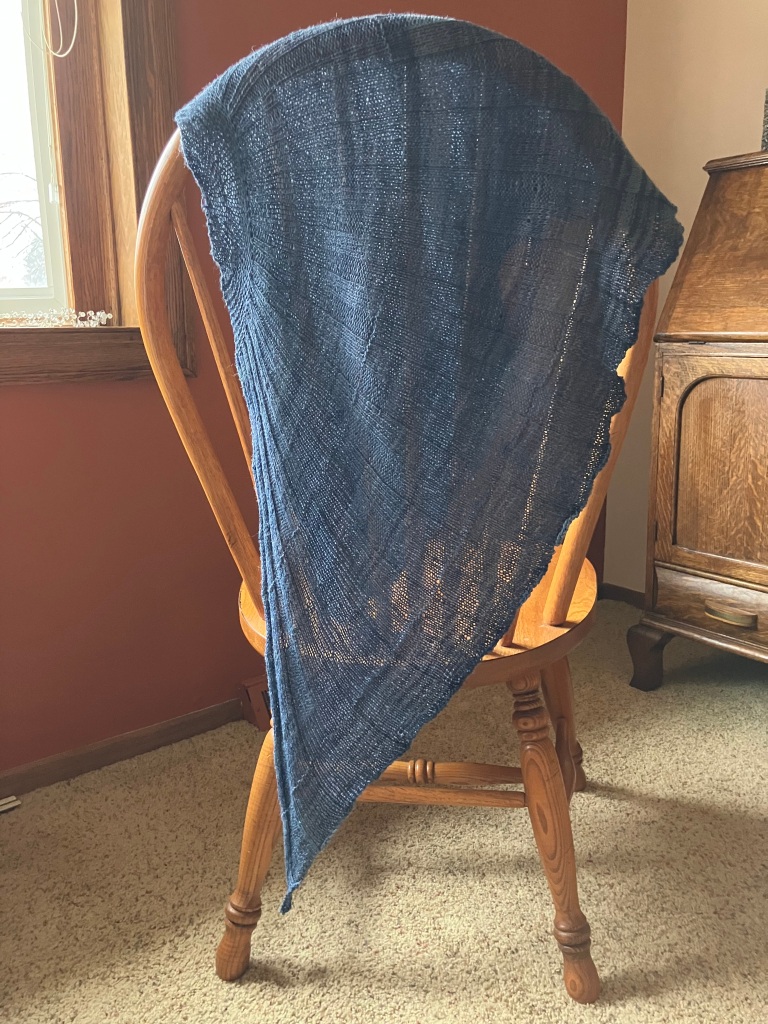Fast Flowers and Finished Projects
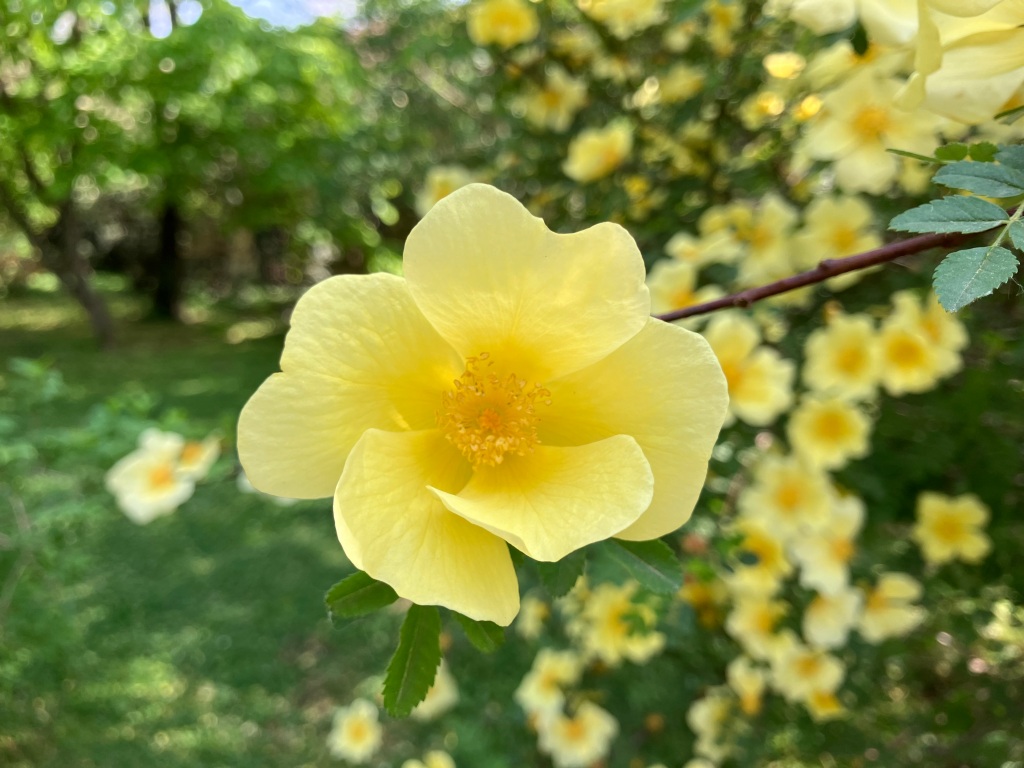
Each day brings more blooms. The cold front that moved in late Monday, dropping temperatures to below average for mid-April, hasn’t put a damper on the fast unfurling of colorful petals. Since my interest in botany developed out of my enthusiasm for edible plants, I am not good at identifying flowers. Often I know their names but am hard pressed to match a word to an actual plant in front of me. There’s lots to learn. One new match I made this week is between the word wisteria and this fragrant bush in the gardens of Schloss Schönbrunn.
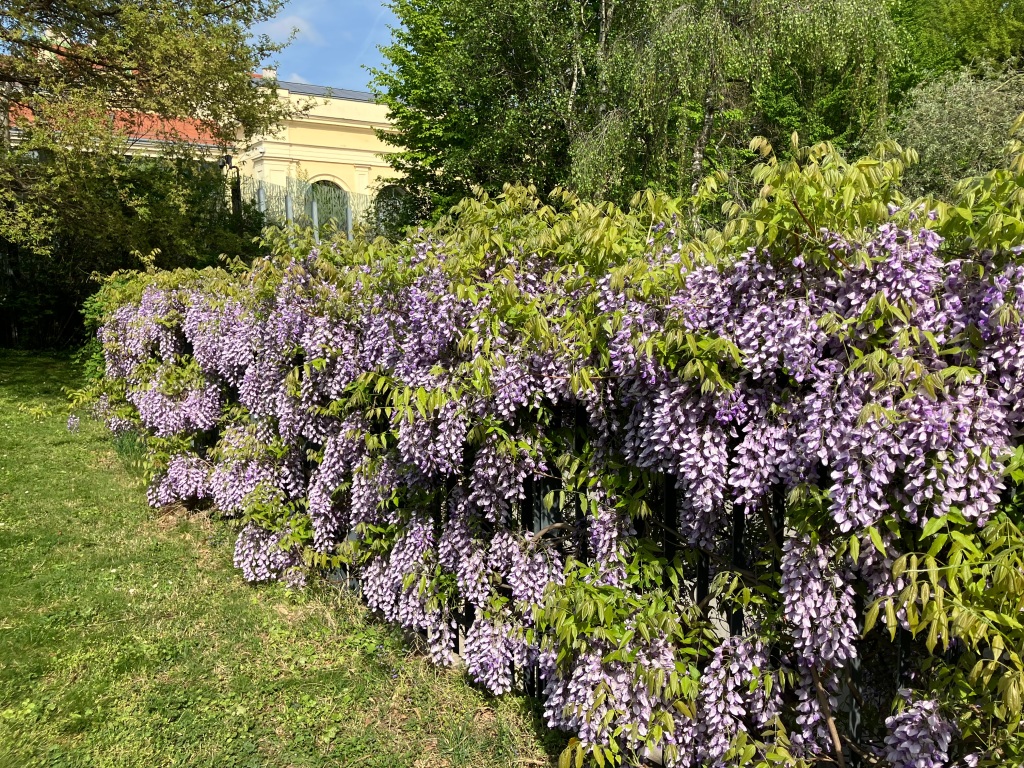
The scent is too heavy and floral for my taste, but I can understand why some people might like to train it to climb a frame in their garden. Thanks to the MG having them in the yard, I am capable of identifying peonies. It will be some time before hers look like these.

The German word for peony is Pfingstrose, or Pentecost rose, which hints at when it used to bloom. (I specifically write “used to” instead of “normally” because we have left that predictable climate behind us.) Since Pentecost Sunday falls on May 19, this is yet another example of how flowering plants are a month ahead of schedule this year. While they have been growing more quickly, I have been working more slowly on certain knitting projects. Started in November, this dark green sweater is finally done. Even though it’s cool enough to wear it, I folded it up and put it in the drawer until fall.

The next finished object did not take nearly as long to make: the bamboo tank that I started in February. It was the first garment I have made in bamboo. My suspicion was that it would stretch and took this into account when deciding how long to knit the body and straps. Blocking indeed made it grow, as will wearing it. It feels very heavy, but that is probably because I knit a larger size than I normally knit since this is for someone else. Now the slate is clear for working with the plant fibers that have been waiting patiently for my attention: Portuguese linen, ramie, and a cotton, linen, and nettle blend.
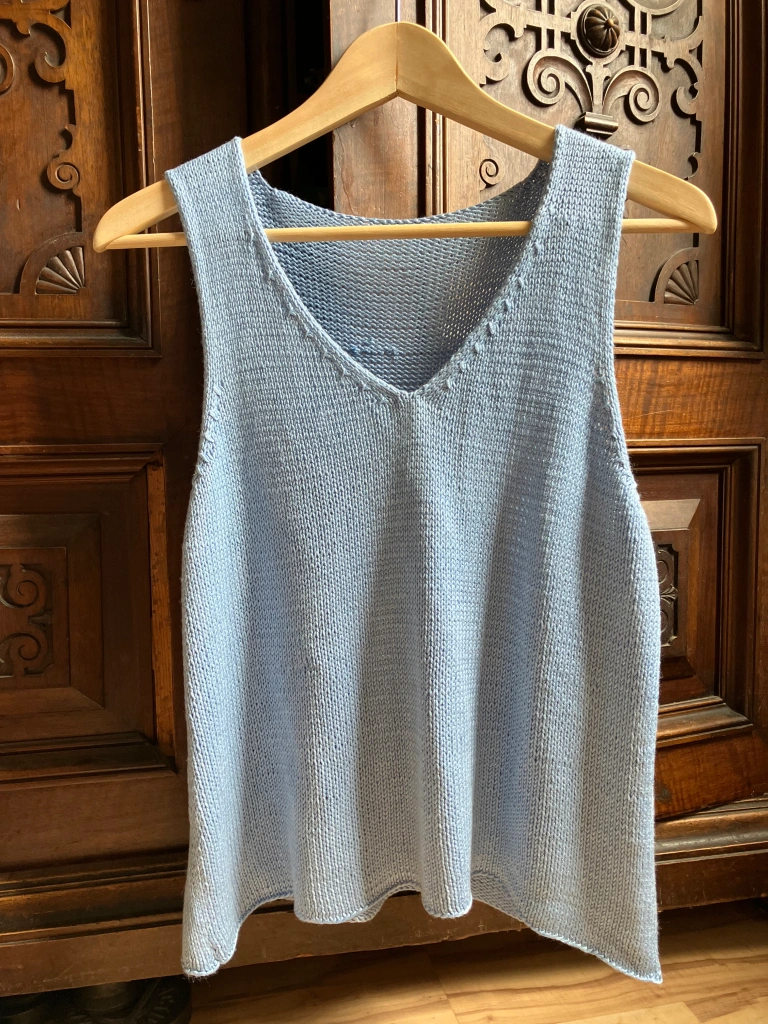
Just as I completed two knitting projects, I finally tried out a recipe I had been wanting to make since February: bakkemoezevlaai, or baked mice pie, from Regula Ysewijn’s cookbook Dark Rye and Honey Cake. The baked mice in question are plant-based: that’s how people in the Low Countries refer to dried pears (German Kletzen). The yeasted crust was simple. The difficult part was pressing the cooked dried pears through a sieve. The creamy consistency of the filling was worth the work. KA found it tasted dezent, good with a light flavor. I was slightly disappointed, unable to taste the cinnamon and wishing I had another slice of the prune pie from Ash Wednesday. It’s easy to get dried pears in Austrian supermarkets because they are a key ingredient in Kletzenbrot, a traditional fruitcake eaten during Advent. The recipe gives instructions about how to prepare dried pears from fallen fruit unsuitable for eating raw. I’m glad I didn’t need to dry my own pears, but it’s good to know what to do with these types of pears so nothing goes to waste. Now it’s time to leave dried winter fruit behind us and gear up for rhubarb and strawberry season.
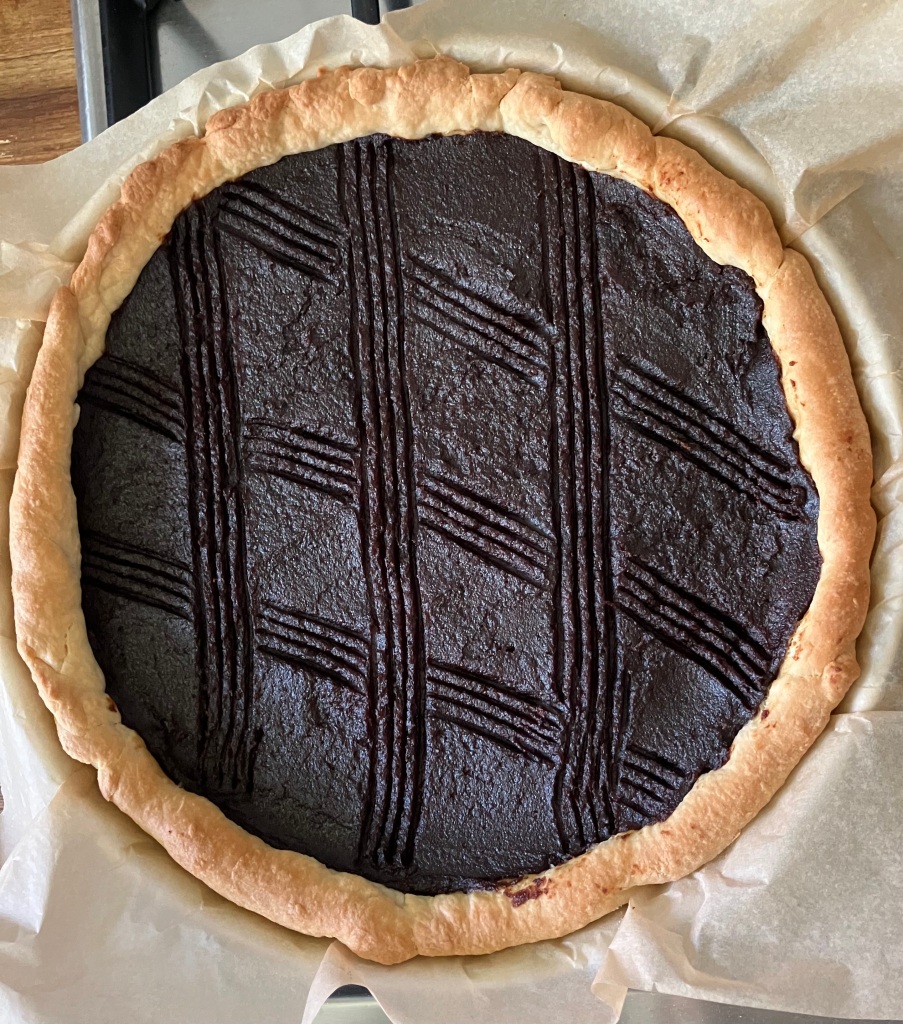
Wishing you colorful flowers in bloom and an end to winter projects!

